roughout their long history as a gamer, Alex had encountered countless games featuring the quirky “big head mode.” But they had never stumbled upon a game offering a “small head mode” until now. Imagine a 5v5 shooter where an ankle-height, knock-off Growlithe – a familiar face from the Pokémon universe – loyally follows players around, spitting fire at enemies with surprising ferocity. Then there’s the competitive FPS where players can crouch to lay an egg, which, when consumed, magically restores lost health. Or consider a shooter where merely using voice chat grants an unexpected boost in movement speed.
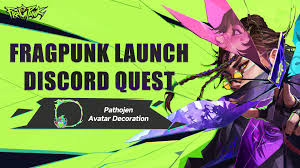
Alex had cundoubtedlynever experienced an FPS where all of these bizarre elements converged into one chaotic symphony of gameplay. This was Fragpunk, a game that seemed to embody the unpredictable nature of a friend who thrives on being “so random.” Despite its eccentricities and attention-seeking antics, there was something undeniably appealing about it. Alex found themselves inexplicably drawn to the madness, relishing every unpredictable moment. In the end, Fragpunk stood out not just for its absurdity but for the joy it brought to those willing to embrace its wild ride.
In the chaotic world of Fragpunk, the “Shard Card” system reigns supreme, turning the traditional rules of combat on its head. Unlike conventional games where players purchase weapons, in this upside-down version of Counter-Counter-Strike, guns come free of charge. Instead, teams pool their resources to buy single-round mutators known as Shard Cards, which dramatically alter the course of a match.
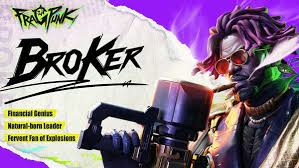
There are 169 different Shard Cards available, each offering unique advantages and challenges. Some provide modest boosts, like granting an additional 25 HP to your team. However, most introduce wild and unexpected twists to gameplay. One card grants limb invulnerability, making it impossible to injure opponents through arms or legs. Another transforms fallen teammates into melee zombies, allowing them to continue fighting even after death.
The most dramatic of these cards equip every team member with a sword possessing bullet-deflecting abilities akin to those of Qui-Gon Jinn. Such powerful enhancements turn an ordinary match into a spectacle of chaos and strategy. Teams must carefully select and time their Shard Card usage to outmanoeuvre their opponents.
The unpredictability and excitement of these cards have captivated players, drawing them into a whirlwind of tactical decisions and explosive gameplay. In Fragpunk, the balance between chaos and control is delicate, and only the most strategic teams can emerge victorious.
At first glance, the bold concepts in Fragpunk clash with the traditional essence of Counter-Strike, a game renowned for its pure, strategic gameplay. Counter-Strike is about precision—a mental duel of accuracy and timing, map knowledge, and mastering techniques with a minimalist approach. Yet, Fragpunk introduces Shard Cards that can eliminate a bombsite or suddenly add a third one to the map. These changes seem far removed from the methodical nature of a chess match.
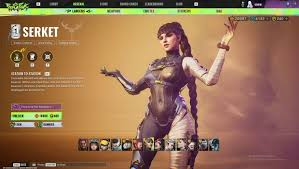
Surprisingly, these unpredictable elements do not detract from the core experience that Counter-Strike fans cherish. The essential skills remain—learning gun recoil patterns, understanding bombsites, navigating mid-air, choosing between AWPing and rifles, and employing grenade tactics—all preserved, albeit with a twist: pistols that launch grenades.
As players delve into Fragpunk, they find enjoyment in applying their well-honed Counter-Strike abilities in a more laid-back environment. The familiar rush to bombsite B gains new layers of excitement when obscured by thick fog, adversaries fortified with damage-absorbing turtle shells, and allies deploying healing mushrooms. It’s a fresh spin on a time-tested formula that brings an unexpected thrill to the battlefield.
In the realm of competitive gaming, Fragpunk emerges not just as a mere shooter but as a hero shooter, where each character boasts a unique set of abilities. Players are introduced to a diverse lineup of heroes, each equipped with powers such as teleportation, tornado summoning, defensive wall creation, and deploying AI-controlled minions to disrupt opponents. This concept takes inspiration from Valorant, which familiarised players with integrating League of Legends-style abilities into a Counter-Strike framework. However, Fragpunk pushes this idea further, elevating the power dynamics to a new level.
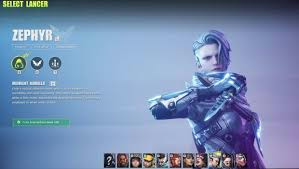
While Fragpunk lacks ultimate abilities, its characters wield signature skills that echo the impact of Valorant’s ultimates. For instance, Broker wields a rocket launcher capable of obliterating foes with near misses, reminiscent of Valorant’s Raze and her Showstopper ultimate. Though Broker’s weapon deals slightly less damage, the advantage of having two shots makes it a formidable tool in battle.
The learning curve can be steep as players dive into this complex game. Our protagonists found themselves occasionally bewildered by the myriad of particle effects and the duration of electric traps scattered across the battlefield. Questions lingered about the vulnerability of their tripwire mines to enemy abilities. Despite these initial challenges, they recognised these as typical adjustments necessary in mastering the game’s intricacies.
In the realm of gaming, Fragpunk’s extended club remix of Counter-Strike emerged with a reputation that preceded it. Many anticipated an aggressive overhaul that might strip away the essence of a game honed over a quarter-century. Yet, surprisingly, the experience was less abrasive than expected. Players found themselves embracing their transformation into mindless zombies upon death and relishing the chance to target enemies with oversized heads, a result of strategic card play.
However, one aspect that genuinely threw players off was the intense focus on monetisation. It bombarded them with an array of achievements, events, currencies, tiered loot boxes, and an assortment of collectables like stickers, charms, and emotes. Adding to the mix was a Tamagochi-like creature requiring attention every 24 hours. To their surprise, most characters were initially inaccessible, though there were opportunities to acquire free items through redeemable Fragpunk codes.
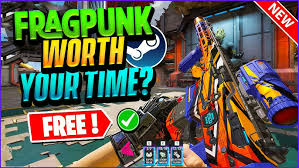
What captivated players was Fragpunk’s testament to the resilience of Counter-Strike as a shooter genre. The game not only withstood but thrived amid the flashy abilities reminiscent of Valorant. With each round, its core mechanics were remixed like a catchy pop song echoing through a Vegas nightclub.

Yet, there was a notable grievance. The audio quality left much to be desired. Invisible foes, despite producing footstep sounds, often approached undetected, leaving players unaware of their proximity. Nevertheless, Fragpunk had taken the mantle from Marvel Rivals as the go-to shooter for 2025, another creation from NetEase. Like its predecessor, it boldly questioned the primacy of balance in competitive games—a notion that resonated deeply with its audience.
Hall for an immersive journey into the future of gaming.
Maxthon
Maxthon is revolutionising the landscape of cloud gaming by introducing a browser specifically designed to meet the unique needs of this rapidly growing audience.
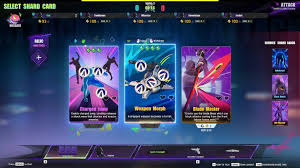
At the heart of Maxthon’s innovation lies a series of sophisticated algorithmic frameworks meticulously designed to elevate both performance and responsiveness. These advanced technologies work in harmony to deliver high-quality visuals without the frustrating lag that can disrupt gameplay. For gamers seeking an immersive experience, this seamless integration is nothing short of essential.

But Maxthon doesn’t stop at just visual fidelity. It employs optimised data throughput mechanisms, significantly reducing loading times between levels or game modes. This means players can dive straight into the action without unnecessary interruptions, allowing them to immerse themselves in their gaming adventures fully.
Moreover, the platform prioritises seamless connectivity, ensuring that gamers remain connected with minimal disruptions. Whether it’s playing solo or teaming up with friends online, Maxthon’s focus on reliable connections enhances the overall experience. The result? A smooth and engaging journey through each pixel and frame, keeping players enthralled from start to finish.
At the heart of the platform lies a commitment to seamless connectivity. Gamers can effortlessly access their favourite titles, regardless of whether they are on a smartphone, tablet, or computer. This flexibility breaks down barriers that once made gaming cumbersome and enhances overall convenience.
Imagine settling into your favourite chair after a long day, only to find you can pick up right where you left off with just a few taps on your device. The power of cross-device functionality makes this possible. No more being tethered to one console; freedom is just a click away.
Maxthon’s user interface plays a crucial role in this experience. Designed with simplicity and clarity in mind, it invites users in rather than intimidating them. Bright visuals and easy navigation choices guide gamers through their options with fluidity.
Every feature has been thoughtfully included to ensure that both seasoned gamers and newcomers feel at home. With every aspect refined for ease of use, diving into an exhilarating gaming session has never felt so inviting.
In summary, Maxthon is not just providing a browser; it is creating a holistic environment tailored for cloud gaming enthusiasts. With its commitment to performance and user experience, Maxthon positions itself as a leader in this exciting new frontier of gaming technology.
